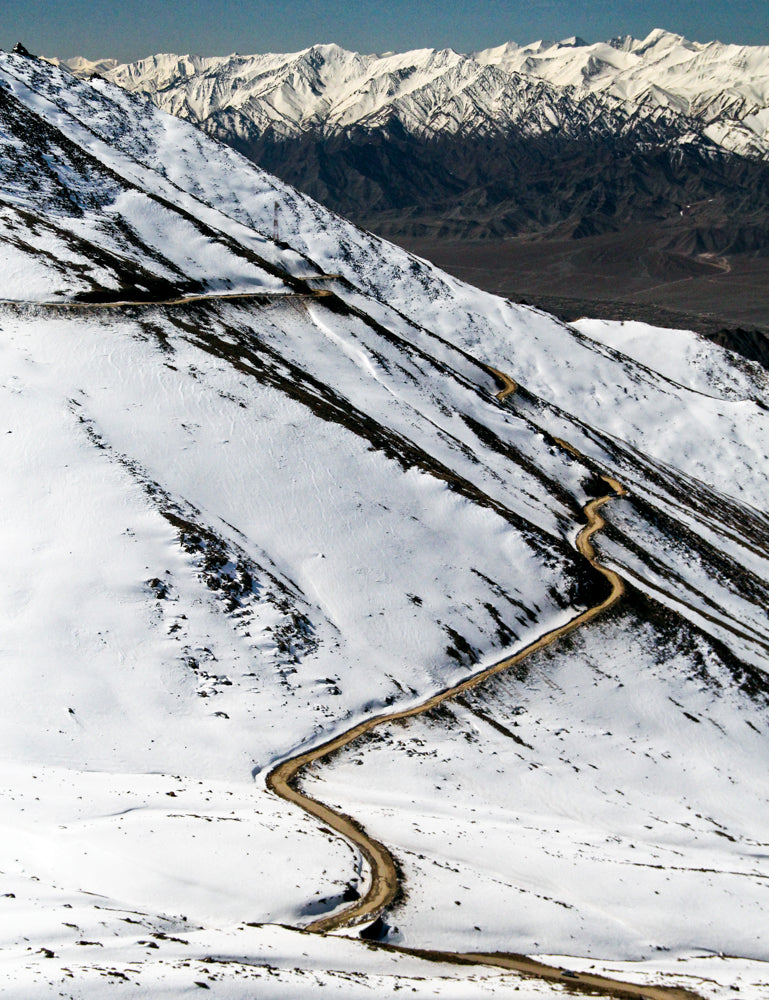
Daryl Hawk
DARYL HAWK


AN UNCONVENTIONAL TRAVELER
“It was my destiny not only to be a professional explorer, but to do it my own way.”
In the 2004, Daryl Hawk became part of Explorers Club legacy when he carried its flag on a full traverse of Bhutan while filming a television documentary. “The appeal of a traverse,” he explains, “is the physical and mental challenges of the weather and the remote nature of the terrain. You’re not just hiking through a big geological expanse — you’re surviving in it.”
More recently, Hawk completed another solo mission through a desolate mountainous region in northern India called Ladakh, “the land of high passes.” I met Hawk in the wood-paneled member’s lounge at the Explorers Club in New York City a few days after his return.
Traversing Ladakh wasn’t part of his original itinerary, he says. His mission had been to photograph two of the last remaining Buddhist kingdoms on either side of it: the Dropka tribe to the west, near the Pakistani border, and the culturally distinct nomads to the east, on the Tibetan Plateau.
“Both tribes are extremely threatened by the encroachment of western civilization, population growth, and global warming,” he says. “I’m trying to show what these quickly disappearing places and cultures look like and convey the need to preserve them. It’s not just about travel and adventure. I have a message.”
Between the tribes lay 4,200 miles of high-altitude terrain. Not exactly a walk in the park, but what the hell. Using centuries-old monasteries as landmarks, Hawk tracked snow leopards and photographed ancient cave paintings along the way. He spent nights with strangers, “sharing their food and drinking their tea,” and never worried about where, or if, he would sleep.
“I set off into the wild blue yonder and just tried to make it to a sizable town by nightfall,” he says. “There were times I thought I wouldn’t make it across, of course. Approaching the Khardung La, the road became treacherous — icy, muddy, and susceptible to avalanches. There were overturned trucks ready to drop from the side of the mountain. As long as I was getting the right vibes, though, I kept going.
“I just feel alive when I’m pushing the envelope,” he says. “I want to have a magical journey and be like a wandering sponge. I found out later from some of the members here at the Explorers Club that I might have been the first Westerner to ever traverse Ladakh. But it was only because the tribes happen to live on opposite sides of the region that it even occured. Firsts are secondary.”
Hawk was born into a family of intrepid travelers, and as a kid would stare wide-eyed at his grandfather’s slideshow dispatches from China, Iran, Africa, and elsewhere. He pored over copies of National Geographic and collected maps.
“It was my destiny not only to be a professional explorer, but to do it my own way,” he says.


Hawk’s brand of travel is not for the timid. He has decades of experience trekking through deserts and rainforests, in all manner of extreme weather, with little more than a few pounds of provisions and camera gear divided between two bags. And he does it, for the most part, alone.
“Solitude is an important part of what I do,” he says. “I don’t have any of the distractions or dramas of other people, which allows me to have a more spiritual experience. Each trip changes me as a person because I prove to myself that I can overcome fear and challenges on my own.”
He doesn’t do war zones, and prefers to focus on the flora and fauna. “I’m not trying to make sweeping statements about what’s right or wrong politically,” he says. “I’m trying to convey the need to save the last wild places on earth, and protect these disappearing cultures. Once these places are gone, a part of all of us will be gone, too. Once they build a hotel on one of these passes, it’s not coming down.”
Hawk produces a handful of maps from his briefcase and fans them across the lacquered table. Ladakh, Bhutan, Argentina, Antarctica — nearly all are torn and taped from repeated folding, and littered with notes and circles. He hands me Nevada Wier’s photograph of the Thiksey monastery in Ladakh, dwarfed by enormous mountains bathed in setting sunlight. “It keeps me focused on what I’m looking for,” he explains.
Another photo, tucked behind the map holder’s scuffed plastic window, is of Shackleton’s ship Endurance, which he carries as a sort of talisman. “These are spiritual pilgrimages,” he says. “I had no family religious background at all, so I forged my own. Nature is my religion.”
No matter how safe a region is, no matter how peaceful a country or culture, things do go wrong. “Every explorer has those moments when he asks himself, How did I get myself into this, and am I going to survive?” Here’s one of Hawk’s:
“I’d heard about some ruins deep in the Andes, so I asked a local driver to help me find them,” he says. “He charged me triple the usual day rate, which should’ve tipped me off, but a couple hours in I started getting really weird juju. We’d stopped at Quechuan Indian villages along the way to take photographs. Quechuans are not usually antagonistic toward Westerners, but in this one village they were giving me such strange looks that I told my driver I wanted to turn back. Wouldn’t you know it, three men with machine guns appear and order us to lie down with our hands behind our heads.

“One person can make a difference, especially if you’re an explorer,” says Hawk. “That’s what I’m trying to do.”
“We’re way out in a remote area of Peru where no one would ever find us. Right away I’m thinking extortion, robbery, jail, murder. Not good options. It turned out we were on the biggest cocaine route in all of South America, and they were the Peruvian army. They thought we were smugglers.”
After heated words were exchanged — and, perhaps, a few pesos — Hawk and his driver beat a hasty retreat. “I have a psychic situational awareness,” says Hawk. “I should have trusted my instincts. Things almost never go wrong when I’m completely alone.”
Part of Hawk’s current role at the Explorers Club is hosting televised interviews with world-renowned adventurers, and arranging dinners in their honor. At the end of our meeting, it’s time to prepare the next one. He leaves me with an anecdote about a recent honoree.
In 1996, the American ecologist and conservationist Michael Fay traversed a 1,300-mile corridor in Gabon, on foot. His objective was to bring the world’s attention to the last pristine forest in central Africa, and the project helped convince the Gabonese government to convert 11,000 square miles of uninhabited wilderness into a series of national parks. “That’s about twenty percent of the country’s trees protected from the saw,” says Hawk. “Countless animals protected from the hunt.”
“One person can make a difference, especially if you’re an explorer,” says Hawk. “That’s what I’m trying to do.”


